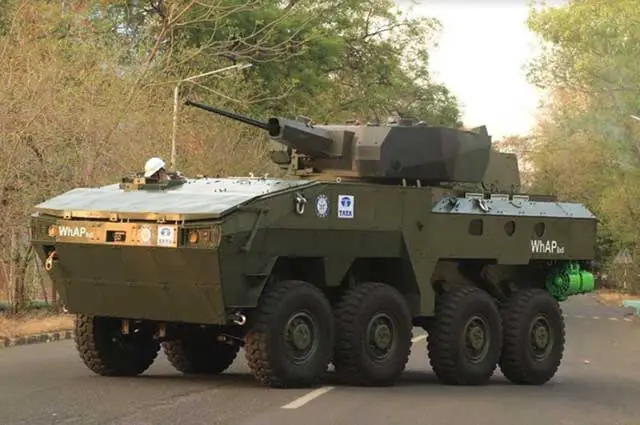At a meeting held in a 2+2 format on November 10, the foreign affairs and defence ministers of both nations addressed the possibility of entering into an agreement that would result in the co-production of Stryker armoured vehicles to satisfy the requirements of the Indian army.
According to a statement by an Indian government source published by Bloomberg, the plan calls for the co-production of “thousands” of Stryker armoured vehicles. Most of these vehicles are expected to be equipped with anti-tank missiles, while the others are expected to watch the battlefield or serve as command vehicles. This plan calls for India to strengthen its military presence along the Line of Actual Control (LAC), often known as the border with China, a region where many incidents occur.
Initially, the Indian Army intended to replace its 2,500 infantry combat vehicles, which were BMP-2s built by the Soviet Union and built locally by Ordnance Factory Medak.
However, the statement regarding the Stryker might come as a surprise to some people because this armoured vehicle will compete with the WhAP (or Kestrel), which is being built by Tata Advanced Systems Limited and the Defence Research and Development Organisation (DRDO), which is India’s defence research department.
Lloyd Austin, the Secretary of Defence of the United States, underlined that the co-production of armoured vehicles would boost the common security of our countries by diversifying supply chains and supporting interoperability between our armies. It should not come as a surprise to anyone that the current climate of global security is difficult. This is another reason why progress in our partnership with India is so vital and why the United States is so dedicated to strengthening it, he said, emphasising the importance of its commitment to strengthening the alliance.
The Stryker, which General Dynamics Land Systems manufactures, has an operational weight of 18 tonnes. It has a range of up to 500 kilometres and can travel up to 100 kilometres per hour while transporting nine soldiers. It is available in a total of eighteen different variations. If this deal goes through, India will become the sixth nation in the world to possess this capability, following in the footsteps of the United States of America, Thailand, North Macedonia, Ukraine, and Bulgaria.

But there is an Obstacle
The Future Infantry Combat Vehicle (FICV) project, authorised in 2008, is confronted with issues in its quest to develop the most advanced infantry combat vehicle for the Indian army. The project’s objective was to provide the country’s armed forces with 2,610 advanced armoured vehicles, which were to be substituted for the Sarath variants of the Russian BMP-2/2K vehicles manufactured in the Soviet Union. The planned deliveries of FICV were in 2022.
The endeavour, nevertheless, ultimately failed. The Indian Army command was compelled to look into acquiring additional armoured vehicles of a comparable design and upgrading the BMP-2. This involves the execution of a contract for the procurement of 156 upgraded BMP-2 vehicles manufactured by Medak facilities that were formerly dedicated to the production of ammunition. This choice was made even though there were plans in place back in 2018 to involve private companies like TATA and Mahindras in the endeavour.
India then decided to modernise 1,600 BMP-2 vehicles, of which 640 infantry combat vehicles are slated to undergo the modernisation process at private industrial facilities.
Concerning the aspects of modernisation, it is worth mentioning that the armoured vehicles are planned to be outfitted with state-of-the-art night vision devices, anti-tank missile complexes “Kornet-E,” and advanced control systems. Additionally, modifications to the protection system are intended.
Following requests for information (RFI) on light and main battle tanks, India’s Ministry of Defence issued an RFI for a new generation Infantry Fighting Vehicle (IFV) in 2021.
The Ministry of Defence of India intends to purchase 1750 tracked vehicles in three variants as part of the Futuristic Infantry Combat Vehicles (FICV) project. Over half the indicated number will be in a “combat” variant with at least 30 mm calibre and standard anti-tank guided missiles (ATGM). The remaining vehicles will be modified for command and reconnaissance.
To satisfy the requirements, the new IFVs must be able to deliver barraging munitions and be equipped with reconnaissance drones. The crew should be at most three people, and the troop compartment must accommodate at least eight soldiers. The IFV must also be capable of fording, meaning it should be able to cross shallow water obstacles.
However, India’s acceptance of the Stryker IFV is not guaranteed because it will have to pass Indian Army trials and compete with other IFV types. Russia is also willing to work with India to co-produce defence equipment. India has its own indigenous IFV models.
